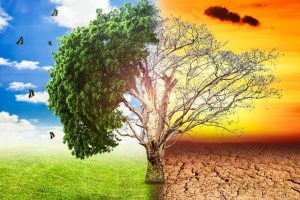Raman Kant, fondly called the ‘Riverman of India’, is a big name in the field of river conservation. He is lauded for reviving East Kali river’s source at Muzzafarnagar in Uttar Pradesh.
Conferred the National Water Award in 2020 by the Union Ministry of Jal Shakti, he also put much effort in the revival of the Neem river’s source, the main tributary of Kali River east, in Dattayana village of Hapur, Uttar Pradesh. He was appreciated by Prime Minister Narendra Modi in his ‘Mann Ki Baat’ programme last year. Kant’s journey as a river conservator began in 2001. He says his objective is in line with Modi’s ‘Water Vision 2047’ on completion of 100 years of India’s independence.
Advertisement
In an interview with The Statesman’s Agraj Pratap Singh, the environmentalist talks about his aim to achieve the sustainable development goals related to rivers, water and environment set by the United Nations. Excerpts:
Q: What are the major reasons behind worsening of the condition of rivers in India?
A: When I started the work of river rejuvenation in 2001, the conditions were not so dire. Rivers are currently facing three major challenges – water shortage, encroachment and pollution. These problems have neither arisen in a day nor can they be solved in a day. For this, while time is needed, concentration of society and government is also required. If we understand the reasons behind deterioration of rivers, we will have to look at the green revolution, industrialization, and migration from villages. In the last 40 years, rivers have moved from a better state to a pitiable one. The nature of a river is that it flows due to the confluence of both groundwater and surface water. During rains, the river provides water to groundwater and after rains, groundwater helps the river to flow. Due to excessive exploitation, the groundwater level went down and the rivers stopped flowing. Seasonal rivers, which used to flow with the flow of groundwater, have become dry due to excessive groundwater extraction. They have been made sick by dumping sewage, industrial liquid waste and solid waste from villages, towns and cities in them, and have been brought to a dying state by encroaching upon their land.
Q. What challenges have you faced as a river conservator and what can be done to streamline the process?
A: Awareness among people is crucial and they need to understand and incorporate certain things in their thought process which will help in this direction. Everyone needs to understand that rivers are our lifeline and once they get polluted, it will affect everything around us. Society can increase the water level in rivers for which we have put forward some models. On the basis of these models, hundreds of bighas of river land at the origin of major tributaries of the Ganga, Kali East, Hindon and Neem rivers, have been freed from encroachment. Lakes have also been built there with the cooperation of society and the government. These efforts have been appreciated by both the government and the public.
Q: Is there a way to address the problem of river conservation on a national platform?
A: We are making this effort through Bhartiya Nadi Parishad. Wherever river rejuvenation work is being done at any level in the country, we are providing technical and fundamental support to that work. The concept is to provide an umbrella where expertise and best practices can be brought under one roof and then problems can be collectively addressed. Such efforts are already being made in America, Europe and Australia. Through the Bhartiya Nadi Parishad, we want to ensure our contribution to India’s Water Victory 2047 by making rivers clean and uninterrupted; we also want to ensure our contribution in the fulfillment of sustainable development goals.
Q: What is the importance of public contribution in safeguarding our rivers?
A: Indians have not only been associated with rivers economically but also spiritually, socially, culturally and historically. That is why India is called the country of rivers. The most sacred and mythological river like Ganga flows on the land of India. This is the reason that when a river ends in India, the entire culture on the banks of that river vanishes because society has settled and developed on the banks of these rivers. In such a situation, it becomes the responsibility of every citizen of the country to contribute in letting its rivers flow free of pollution. Earlier every big city or even a small village was dependent on rivers for various reasons. Rivers have also been worshipped in our country since ages.
Q: People today have forgotten about small rivers which are turning into drains.
A: I believe special attention should be paid to small rivers in the country. These small rivers together make the big rivers water-rich. The Ganga covers about 44 per cent of the basin of India, that is all the small and big rivers of about 44 per cent of India’s land are tributaries of Ganga. These rivers should be considered as Ganga. If these small rivers are made water-rich, the Ganga will always remain prosperous. A very crucial reason for people forgetting small rivers and their tributaries is that encroachments alter the entire space, and people then fail to identify with that space. Dumping of waste and untreated fluids erode the small rivers of their identity. It is not easy to make the land of a river encroachment-free when those lands have been occupied for decades, and slowly the river starts changing its course or simply starts disappearing. As such, the landscape changes.
Q: Your comments on pollution of the Yamuna river and the way forward.
A: All big cities of the world are established on the banks of rivers. These rivers have added to the identity of those cities, but the pollution of Yamuna in the national capital, Delhi, is a blot on India’s forehead. Only a small part of the Yamuna flows through Delhi, but the city pollutes the river the most. Once upon a time, all the small rivers of Aravali hills used to bring their pure water to Yamuna and leave it there, but due to lack of water, these small rivers have turned into drains today. Yamuna is also subjected to abuse as several big drains of the city, with untreated polluted water, goes into the river. Proper water treatment solutions could solve the river’s issue and with a check on releasing of untreated dirty water, the Yamuna could be restored to normalcy. The governments should go an extra mile for the Yamuna.
Q. Can you talk about flood prevention which is a major concern in India?
A: Flood-like situations occur in big rivers, and flooding is the nature of the river. The memory of a river is very sharp, it will never forget its path and land. This is the reason that big rivers keep changing their path year after year in their basin. It is this flood that helps in making the plains cultivable. Floods cause more damage when one encroaches into the river basin. Floods also have their own pattern which can be divided into 10, 20, 50 and 100 years. If we want to avoid the disaster of floods, we will have to move away from the paths of rivers. Now the time has come to free the rivers. While we have to free the rivers from pollution, we will also have to free them from encroachment. Only then can our future be secured.











